Blog
Canada Stands its Ground while U.S. leaves Paris Agreement

Despite US President Trump’s decision to exit the Paris Agreement in search of a better deal, Canada remains committed to the cause. However, America’s northern neighbour still has a lot to accomplish to meet the agreement’s proposed goals.
Although Canadian Prime Minister Trudeau has expressed disappointment in Trump’s decision and claims that Canada will do whatever it can to minimize climate change, the country’s environmental actions don’t reflect its dedication to the earth. A 2015 report card from The Columbia Institute evaluating the environmental protection efforts of 61 countries showed that Canada ranked 58th.
Of course, Canada hasn’t been sitting idle in this category. The country’s government put a carbon tax into place to discourage companies that emit great amounts of greenhouse gases. It will need to work on removing fossil fuel subsidies and implementing more renewable energy to meet its goals laid out in the Paris Agreement, however. Creating a legal carbon reduction framework the way the UK, Mexico, Denmark, and Finland have is an important next step for Canada.
Read more: Canada Stands its Ground while U.S. leaves Paris Agreement
Avoid Putting these things in your Food Disposer

Ever since the early forties, food disposers have been built into household sinks, and restrictions on them have been put into place to avoid too much difficult-to-break-down food waste from entering sewage systems. Today, the restrictions that have been maintained relate only to what kind of food shouldn’t go through these devices, and it’s important to review that list.
Animal bones and the grease that results from cooking meat should never be put in a food disposer. The grease will harden and build up until your drain is clogged, and the bones will shatter into large chunks that can’t fit through the device’s openings, jamming up the system.
Are Maggots the Answer to Food Waste?

A farm in southwestern China uses black soldier fly larvae to break down leftover food, and this could be the key to diminishing the country’s food waste problem.
Capable of consuming twice their bodyweight in food daily, the maggots eat the organic waste until they turn into black soldier flies and are used as energy conservative, protein-packed feed for farm animals like chicken and fish. Crop fertilizer is created from their faeces as well.
Each of China’s 1.4 billion residents discards nearly 30 kilos of food waste annually, so the maggots will never run out of sustenance. Most of the food is purchased from a selection of 2,000 restaurants and given to the maggots, who typically eat two kilos of the food in just four hours.
Burning Waste is Harming our Planet more than you Think

If you don’t know where your garbage goes or what’s done with it, it’s easy to ignore how much you’re producing. But most people would think twice before buying things like double-wrapped granola bars or one-use ziploc bags if they realized that Americans alone discard more than 250 million tonnes of garbage annually, most of which ends up underground and harms the well-being of surrounding communities.
Westchester County in New York continues to receive the lowest grade on the American Lung Association’s air quality scale, partially due to how close it is to the carbon-dense New York City, but mostly due to its assigned role as a garbage dump in the past. There even exists a plant in the area that burns 2,250 tonnes of waste daily from both domestic and industrial locations.
Despite the fact that it provides 63 MW of energy for nearby residences, the way in which that energy is produced isn’t environmentally friendly or renewable in the slightest. Alongside that so-called clean energy comes 131,000 pounds of carbon monoxide and 577 million pounds of carbon dioxide, and that’s just one plant. That amount of energy can also only be produced once from a given amount of waste, as it can’t be reignited and burned again.
Read more: Burning Waste is Harming our Planet more than you Think
Winnipeg Homeowners Tired of Paying for Stolen Waste Bins
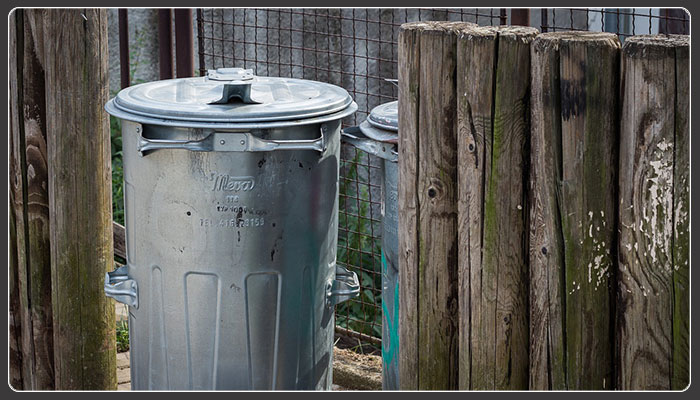
The residents of Manitoba Avenue are fed up with paying the fees to replace their stolen waste bins - and rightfully so.
Many homeowners have misplaced their bins or had them stolen two to four times while residing there, and the city only pays for the replacement costs of damaged bins. Each recycling bin is $61, while each garbage cart is $86. These containers have an extra $25 tacked on if you need delivery.
As the amount of garbage and recycling grows, so does the need for extra bins, which may be the cause of the steady incline of missing bins. In 2014, the number of lost garbage and recycling bins in the area was 697. But in 2016, that number jumped to 750.
Read more: Winnipeg Homeowners Tired of Paying for Stolen Waste Bins
Managing Waste Aboard Aquatic Vessels

As waste management becomes a bigger problem for the world each year, keeping garbage under control while at sea in particular can be tricky. If you choose to release it into the water, it must be done legally and safely due to the current state of our world’s oceans.
Before large vessels like super-yachts set sail, effective waste management systems must be incorporated into the boat’s design. Sometimes, food waste can be ground up and released far out from shore due to its organic composition. But usually, super-yachts choose to install vacuum holding tanks.
Vacuum holding tanks are fairly small and often come with antibacterial washes for sanitation and odour control. They’re tough enough to survive life at sea and easy to maintain, as well. Upgrades in vessel sewage, like air filtration and UV treatments, also help handle on-board waste.
Oceans have Become Plastic Dumps

Despite the importance and vastness of the world’s oceans, they don’t get the respect they deserve. In fact, these life-giving bodies of water collect the majority of the planet’s discarded plastic, affecting entire networks of plants and animals.
The UN’s upcoming Ocean Conference will address the issue without a doubt, focusing mainly on how India and China, which contribute to 70% of plastic in oceans, can reduce their plastic production and dispose of discarded plastic properly.
While all sorts of plastic including water bottles, soft drink packaging, and microbeads affect the sea’s ecosystem, humans are also suffering the consequences. Those who rely on seafood for sustenance are at risk of developing cancer and causing harm to their internal organs through accidental plastic consumption.
The world’s plastic production in 2015 was 322 million, 214 times greater than it was in 1950. Each year, eight million tonnes of that plastic makes its way into oceans, and in a few decades, the fish-to-plastic ratio by weight could be 1:3.
Isolated Pacific Island Covered in Washed-Up Plastic

The beauty and ecosystems of an uninhabited South Pacific island are being threatened by the tens of millions of discarded plastic pieces that have appeared on its shores.
This plastic has begun to interfere with the health, safety, and overall survival of the island’s creatures. Currently, nowhere else in the world has as much plastic build-up in one place as this island does. Although researchers only explore the island a handful of times every century, the litter comes from highly populated areas and travels nearly 5000km through the ocean’s waters before ending up on the island.
Unfortunately, the poor condition of the heritage island isn’t the only plastic-related problem. Shockingly, the island’s plastic only represents about two seconds’ worth of the plastic produced worldwide each year. It’s clear that this plastic isn’t all being recycled, either; in fact, much of it is either littered or misplaces later on in the recycling process.
Read more: Isolated Pacific Island Covered in Washed-Up Plastic
Women are Entering the Waste Industry at a Higher Rate

Lindsey Leitch, a truck driver for American collections specialist, Waste Management, has recently become more well-known for her role simply due to the fact that she is a woman.
Leitch carries out the tasks required of a garbage truck driver while simultaneously raising her children with her husband, encountering situations similar to every other mother, including giving constant reminders to her kids to clean their rooms. This often proves more of a challenge than.
Upon the discovery of the 175,000 driver shortage in North America, expected to last nearly a decade, many waste collection companies are recruiting more and more women. Currently, only about one-tenth of Waste Management is represented by women, and increasing that number will only benefit the company and its employees. The same goes for waste management companies all around the world.
Read more: Women are Entering the Waste Industry at a Higher Rate
Playgrounds Created from Reusable Items Tackle India’s Waste Problem
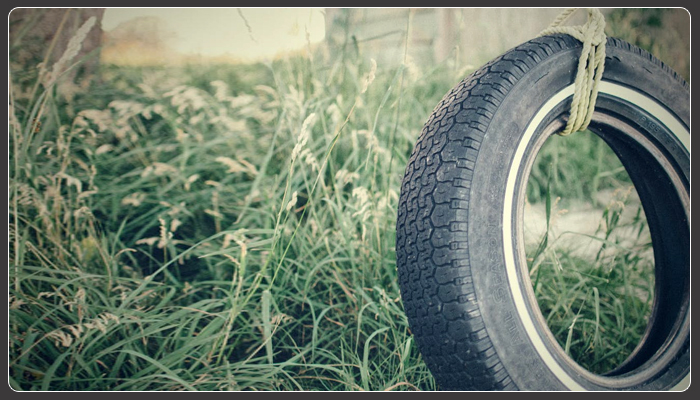
Five students from the Indian Institutes of Technology have created a startup that uses scrap waste to build playgrounds for the country’s children.
The aptly named Anthill Creations has gone to four different cities in India for nine separate tasks, using nothing but discarded car tyres to construct playgrounds and libraries for the country’s youth. So far, the company has used 830 waste tyres in their projects, making India’s one million tonnes of discarded tyres a little lighter.
Anthill Creations chose tyres for their low cost, slow decay, vast number in the country. Tyres that end up in landfills are incinerated, a process that pollutes the surrounding environment. Their very first project, a playground for the Disha Sheema Care Centre, was completed in 2014 and gave the company’s founders an optimistic outlook for future projects.
Read more: Playgrounds Created from Reusable Items Tackle India’s Waste Problem
Pollett River Run Warrants Garbage Pickup Session Every Year
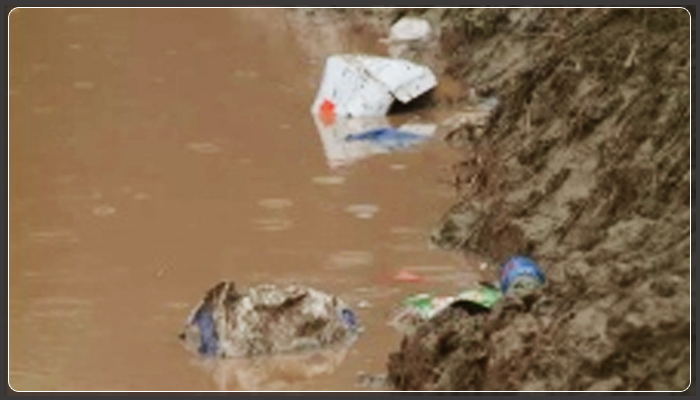
After the annual Pollett River Run in the New Brunswickian city of Elgin, litter can be found everywhere. But many participants stay and help clean up, even making a tradition out of picking up garbage on the riverbanks.
For the most part, the litter left behind comes from people outside the city who drop by solely for the festival. While it doesn’t get too rowdy, a few arrests have been made in the past for those who disregarded the rules of social conduct.
The trash left behind is certainly the biggest problem, as it can endanger the flora and fauna of the area, especially that which is highly processed. Some of Elgin’s species are nearly extinct due to both pollution and over-harvesting.
Read more: Pollett River Run Warrants Garbage Pickup Session Every Year
Police Find Ditch-Littering Mississauga Couple

A Nottawasaga resident reported the vehicle build and license plate number to the OPP of two people who were disposing of their household garbage in a ditch next to a main roadway.
One police officer was sent to the location, a side-road of Adjala-Tosorontio Township, and discovered the full garbage bags after a few minutes of searching.
The people responsible have been identified as a couple from Mississauga and charged for disobeying the rules of the Environmental Protection Act and the Highway Traffic Act. The two offenders will go to court later this year.
If any residents of the area see anyone else recklessly dumping garbage, they are urged to call the authorities as soon as possible to help protect the environment and have those responsible for harming it, face the appropriate consequences.
Smart Waste Bins to be used in Pittsburgh

While everything around us has become “smart” and tech-focused such as our cars, phones, etc, it’s no surprise that we’re seeing this same phenomenon being applied to waste collection. Pittsburgh will soon spend upwards of $580,000 on hundreds of “smart” waste bins - disposal cans that send an alert to employees at Public Works when they’ve reached maximum capacity.
These new waste bins are expected to reduce the hours of work employees are assigned to check on the amount of waste in bins all over the city, after receiving the go-ahead from City Council from a 5 to 2 vote. The aim is to increase efficiency and reduce the amount of overflowing litter.
Some city leaders can’t get behind the new rule, insisting the cost for such a small change is too high. Other are optimistic that these smart cans will have a significant impact on working hours.
The smart waste bins are to be arranged by this summer, and the city will begin to observe and analyze the effects they have.
Eliminating Highrise Building Carbon Emissions

Canada’s biggest cities need a construction adjustment if they wish to be kinder to the environment. Right now, Toronto’s apartment buildings contribute to half of the city’s total greenhouse gas emissions. Montreal and Vancouver are much like Toronto in terms of architecture, putting them at risk as well.
Of course, Toronto still comes out on top in the skyscraper count, accounting for three of every ten domiciles. Surprisingly, highrise buildings give off fewer harmful gases than traditional houses do, so the solution isn’t a simple one.
London, Vancouver, Montreal, and Quebec City all have more apartment buildings than individual houses, and while that number continues to grow, skyscraper designers are slowly moving towards an emissions-free approach. Canada’s federal government would like this plan to be achieved by 2030 with a $182 million minimum.
Coca-Cola’s Plastic Bottles aren’t the only thing Hurting the Planet

Coca-Cola managed to pump out over 100 billion plastic bottles in 2016 alone, a clear indication of its large contribution to the ocean’s pollution. But it also consumes more caffeine and sugar cane than any other single company in the world. Due to its shockingly large environmental impact, green organizations have flocked to Coca-Cola every year.
The food firm was against the possibility of introducing additional fees to soft drinks that would be reimbursed when the empty containers were returned, but in the seventies, the industry opted for aluminum cans that were easier for buyers to return, better to recycle, and didn’t require an extra vehicle to transport to a factory.
Coca-Cola and other big name brands fought against this principle and won, claiming the extra fees tacked onto the drinks would reduce sales. The traditional return system was substituted with recycling bins distributed to each home paid for by the government. This method was implemented almost nationwide by the eighties.
Read more: Coca-Cola’s Plastic Bottles aren’t the only thing Hurting the Planet
Garbage Bins will no longer be used in Korean Public Washrooms
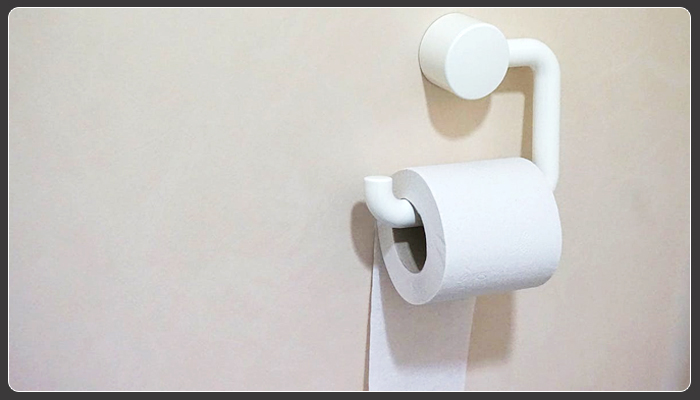
After years of having people throw used toilet paper into garbage bins, Korea will be removing these said bins and offering easy breakdown toilet paper to combat sanitation problems at the beginning of 2018.
The unpleasant smell and lack of hygiene produced by the garbage bins became a serious issue recently, leading to the writing and passing of a new bill for the abolishment of the system. To accommodate the needs of women, one feminine hygiene box will be placed in each stall.
Changing the disposal system of the country’s public washrooms will also offer easier utilization and added comfort, especially for foreigners who are unfamiliar with the nation’s current method. Frequent subway users are expected to benefit the most.
In addition to the waste bin removal, cleaning staff will need to put up a sign when in the opposite sex’s washroom, and panels will be placed between urinals in the men’s facility.
Read more: Garbage Bins will no longer be used in Korean Public Washrooms
Researchers locate Five-century-old Shipwrecked Anchor in Caribbean
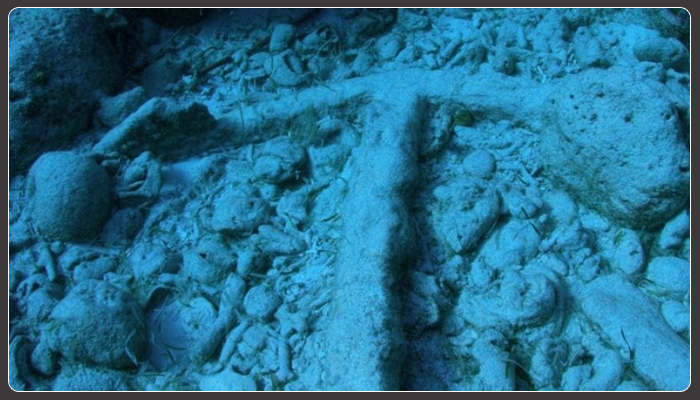
An anchor dating back nearly five centuries has been found by experts off the coast of the Caicos and Turks islands, but this anchor isn’t just ancient - it’s suspected to have been used by Christopher Columbus himself.
The anchor weighs in at around 545 kg and was reportedly used between 1492 and 1550. The size, weight, and make of the anchor all point towards its use for one of Columbus’ ships. Experts were able to locate the site with extensive research, an astronomical treasure map, and a magnetometer for diving and investigating the shipwreck.
Research shows the clear connection between the shipwreck and the Pinzon brothers, who captained the two of the famous Columbus ships, the Nina and the Pinta. The former of the two ships was taken down by a hurricane in 1500 while stabilized in close to the islands by which it was recently found.
Read more: Researchers locate Five-century-old Shipwrecked Anchor in Caribbean
The Swachh Bharat Mission has Bill Gates’ Seal of Approval

Indian Prime Minister Narendra Modi has received a bright review from Bill Gates for the implementation of Swachh Bharat in 2014. The mission aims to stop public defecation and clean the country’s streets for the health and safety of its citizens. Both Gates and the Indian public have praised Modi for his efforts and given him support throughout his journey to complete the mission.
Gates brought to light the fact that Modi took India’s sanitation problem very seriously and was bold enough to look for a solution despite the issue being sensitive, something very few leaders have attempted. Constructing 75 million new toilets across the country will save $106 billion or more every year.
Two and a half years after Swachh Bharat was put into place, the number of citizens with adequate sanitation tools rose from forty-two percent to sixty-three percent, and the project is expected to come to a close by October 2019. Each state has its own tracking system to determine whether it meets sanitation requirements or not.
Read more: The Swachh Bharat Mission has Bill Gates’ Seal of Approval
The Benefits of Hiring a Garbage Bin Rental Company
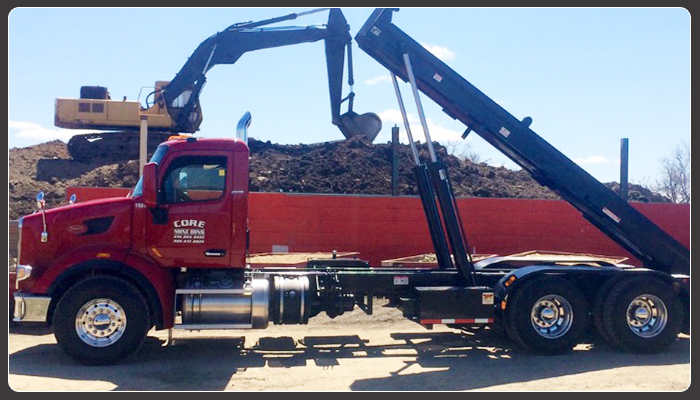
Garbage bin rental services are often used by large construction and renovation companies to facilitate the demolition or waste collection portion of a project. These bins come in various sizes however and can be used by businesses, construction companies and even individuals depending on the specific need.
When renovating your home, you'll probably require one place to keep all of the debris and garbage accumulated during your renovation. You'll most likely be dealing with a variety of materials such as floor tile, wallpaper, cabinetry, counter tops, old hardware and maybe even some hazardous materials. Employing the services of a disposal bin rental company will take care of all your waste collection needs.
Getting help from a garbage bin rental company is the right choice, especially when hosting an event such as a big outdoor party, where you may end up with loads of garbage. A reputable disposal bin rental company will provide you with a stress-free experience while taking care of all the waste-related details so you can focus on planning an awesome party! Did we mention you won't have any clean-up to do after the party?
Read more: The Benefits of Hiring a Garbage Bin Rental Company
Scientists Plan to Mimic Plastic-loving Caterpillar’s Abilities

The world’s plastic build-up could be gone within the next few decades thanks to a species of caterpillar that eats plastic bags. This caterpillar - the moth Galleria mellonella’s initial form - is known to eat beeswax from hives, and the creature’s molecular synthesis of this material works just as well for polyethylene, the thin, flexible plastic that makes up grocery bags.
Polyethylene is constructed at a shocking rate of eighty million tonnes per year, and effectively disposing of it has been a long-time problem. Although the material is biodegradable, the process lasts hundreds of years. Fortunately, plastic-eating caterpillars take less than sixty minutes to create holes in polyethylene bags, making them more susceptible to rapid breakdown.
The science behind this caterpillar’s plastic-destroying ability is still a mystery, but researchers plan to investigate and form a concrete solution for excess polyethylene. Some suspect that the insect’s microbes play a significant part in the deterioration process, which could be mimicked and applied to areas with plastic overload.
Read more: Scientists Plan to Mimic Plastic-loving Caterpillar’s Abilities
Waterloo Encounters a Green Bin Shortage while Garbage Rules Change
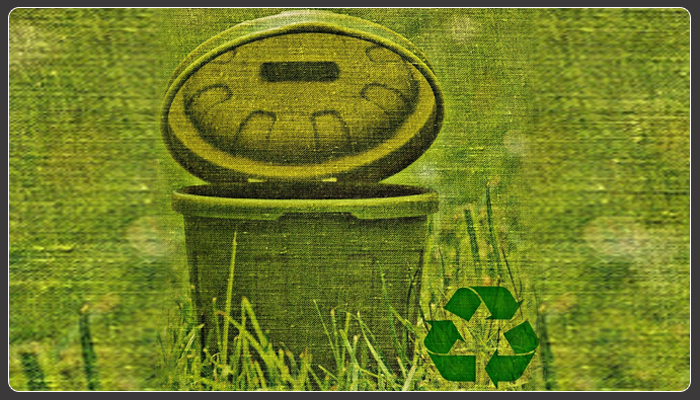
Waterloo Region has recently changed its policy on urban waste collection, and they’ve encountered a problem. The day after the new policy was put into place, the demand for green bins surpassed the supply by a shocking amount.
Over 20,000 green bins were given out last year alone, compared to the annual norm of around 6,000. And now, only four months into this year, over 11,000 more have been distributed. Despite those somewhat frightening statistics, the situation is by no means unfixable.
The heightened demand for green bins in the city indicates that its citizens are dedicated to the cause, and already were before the waste program had even changed. When the new rules became valid, an unmanageable amount of bins was needed, and staff is working hard to produce more.
Read more: Waterloo Encounters a Green Bin Shortage while Garbage Rules Change
Waste Bin Removal Test in New York Ends After Five Years
 In an attempt to decrease garbage littered in its underground train system, New York took away its waste bins and watched citizens react. Instead of people discarding their garbage elsewhere, however, the volume of litter in the stations increased with the absence of the waste bins, causing the city to scrap the idea.
In an attempt to decrease garbage littered in its underground train system, New York took away its waste bins and watched citizens react. Instead of people discarding their garbage elsewhere, however, the volume of litter in the stations increased with the absence of the waste bins, causing the city to scrap the idea.
The experiment began in 2011, implemented in only two stations at first. By 2014, the number had grown to thirty-nine, but the test came to a close in 2016 after a surplus of waste and track fires were detected. With over 450 underground train stations in the city, excess litter quickly became a health and safety hazard that could not be tolerated.
The test’s organizers admit that their hope for not only littered waste, but waste in general, to decrease was somewhat unrealistic. The major American city is looking into better options to clean up litter on the tracks and prevent it from getting there at all.
Read more: Waste Bin Removal Test in New York Ends After Five Years
Ohio Inmates Construct Computers out of Trash to Obtain Internet Connection
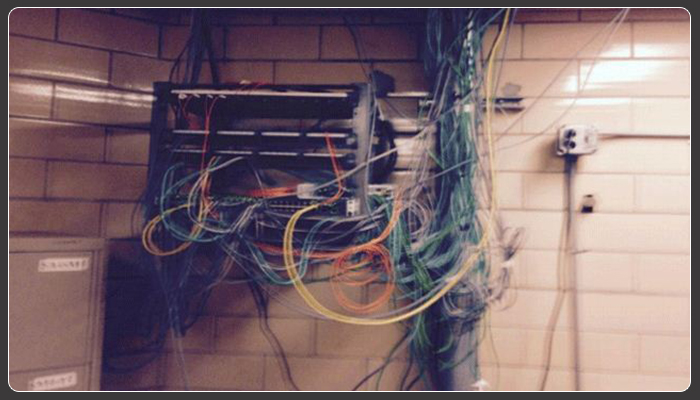
A 2015 incident has been released to the public about two prisoners in an Ohio jail who created personal computers from discarded electronic parts. The inmates were able to conceal the computers in the training room ceiling and hook the devices up to the internet through the prison network.
This occurrence came to light after a year of collecting evidence in a recent fifty page report, written by the state’s Office of the Inspector. The parts recovered by inmates were part of a program in the correctional facility to reuse pieces of old electronics, reducing the building’s waste.
The two prisoners quickly secured a network connection to their devices and began looking through the digital files of their peers. Furthering their legal offence, they found ways to create imitation passes for restricted areas, fraudulent credit cards, and fatal weaponry. It was also determined that pornography sites, online chat rooms, forged signature certificates, and other related media were accessed.
Read more: Ohio Inmates Construct Computers out of Trash to Obtain Internet Connection
Longtime Nurse Turns Hospital’s Trash into Treasure

Ever wonder what happens to the many plastic parts used to maintain hospital tools when they’re no longer needed? For one healthcare employee, they become a work of art.
Tilda Shalof was an ICU nurse at Toronto General Hospital for nearly three decades, and in that time, she collected hundreds of lids, levers, screws, and connectors of various colours. Why? Because none of them were true biomedical waste.
Having been removed from their tools before use and otherwise untouched, Shalof decided to bring the pieces home and put them to use again. With the help of two experienced artists, she created a thirty-six square foot mosaic of reds, blues, greens, yellows, purples, and oranges. The finished product has been mounted on the wall of Shalof’s old workplace.
Read more: Longtime Nurse Turns Hospital’s Trash into Treasure
How One NGO is Using Recycled ‘Mata Ki Chunni’ to Make Wedding Dresses for the Under-Privileged

An Indian wedding is a big event in just about all possible ways. But it’s also expensive for many family, especially those with less money to spend on the event.
That’s why an NGO called Goonj, based in Delhi, has made it their mission to make sure people with limited financial resources to have all they desire out of their wedding. Goonj goes about this by obtaining wedding dresses that have been worn from people in wealthier cities, redesigning them and then distributing them through local panchayats to people in rural areas.
How? By reusing and recycling ‘mata ki chunni’ (which is often used in large amounts in religious ceremonies) to manufacture lehengas for women getting married. Since many dispose of their chunnis into the river or simply give them away to others, Goonj is asking for people to donate these items to make wedding kits.


